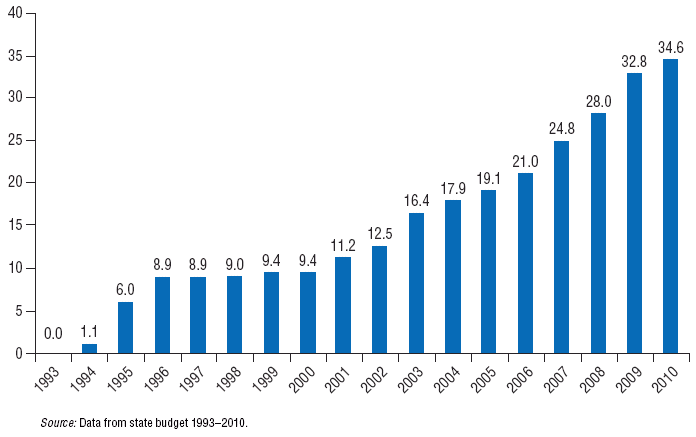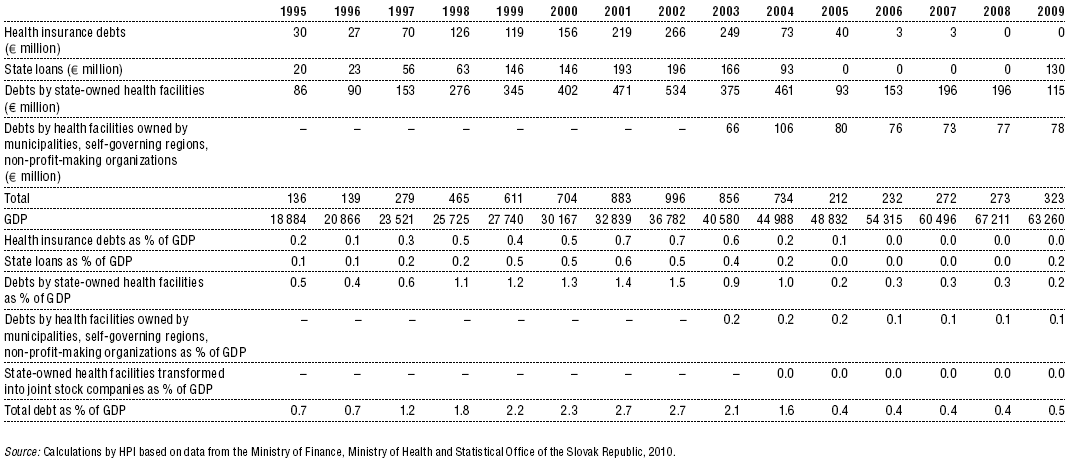—
HPI Network > HPI - Health Policy Institute > Health System in Slovakia > 6. Principal health reforms > 6.1 Main reforms since the 1990s
6.1 Main reforms since the 1990s
Friday, 06. May 2011, 19:59 — HPI
| << PREVIOUS
6. Principal health reforms |
Introduction – Organization – Financing – Resources – Provision – Reforms – Assessment – Conclusions – Appendices |
NEXT >>
6.2 Reform period, 2002–2006 |
Slovakia, analogous to the Czech Republic, reintroduced a Bismarck model of health insurance in 1993. The Slovak National Health Insurance Fund was established in order to finance health insurance, sickness benefits and pensions. In 1994, the Act on Health Insurance was adopted, which enabled the establishment of other health insurance funds and legally defined SHI. More specifically, the latter was defined as a combination of financial contributions from the economically active population and state contributions on behalf of the non-working population. Considering the economic climate, the transition to an SHI system in 1993 was a bold move.
First, the economy was in a deep depression and economic performance in 1993 only reached 76% of the 1990 average. High unemployment and stagnant wages seriously affected the financing of health insurance. At 3.3% of GDP, contributions from economically active people were the only source of health financing.
Second, public finances were seriously constrained. The state did not have the fiscal capacity to pay health insurance contributions to cover the economically inactive population (approximately 3.3 million insured, 61% of the total population). In 1993, the state made no contributions to the health system and contributed only €1.11 per economically inactive insured person in 1994. Although the state made significantly higher contributions in 1995 and 1996 (see Fig. 6.1), the amount per insured person was not significantly increased until 2000. State contributions during this era increased only by 5.2%, while the total cumulative inflation in the same period reached 35.4%.
Fig. 6.1: State contributions on behalf of the economically inactive to health insurance companies in € per capita

In 1993 and 1994, being heavily underfinanced, the health system produced a deficit of €780 million, accounting for 4.8% of the GDP. This starting deficit negatively affected the performance of the health system during the second half of the 1990s. Although the gap was somewhat closed in 1996–1998, the debt increase could not be stopped. The deficit reached €150 million in 1999, €260 million in 2000 and up to €290 million in 2001. The government tried to clear debts with unique non-recurring resources from privatization of state property and spent a total of €339 million on debt reduction from 2000 to 2002. In 2002, the annual deficit dropped to €220 million; however, the total debts almost reached €1.0 billion (see Table 6.2), more than 40% of health system resources.
Table 6.2: Development of debt in the health care system

News
The amendment of the Decree on emergency medical service
Health insurance companies returned over 400 thousand €
The HCSA received 1,647 complaints last year
A half million people will earn more
Most of public limited companies ended in the black
Debt of hospitals on premiums has grown to nearly € 105 MM
Slovak health care may miss € 250 million next year
Profits of HIC amounted to € 69 mil. last year
Owners of Dôvera paid out money but did not paid taxes
Like us on Facebook!
Our analyses
- 10 Years of Health Care Reform
- New University Hospital in Bratislava
- Understanding informal patient payments in Kosovo’s healthcare system
- Analysis of waiting times 2013
- Health Policy Basic Frameworks 2014-2016
- Analysis of informal payments in the health sector in Slovakia
- Serbia: Brief health system review
developed by enscope, s.r.o.
